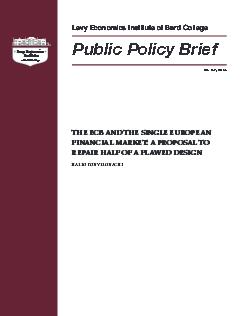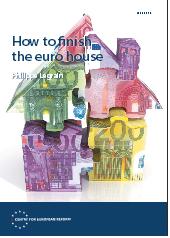Tonveronachi, M. (2014 ) “The ECB and the Single European Financial Market: A Proposal to Repair Half of a Flawed Design“, Levy Economics Institute Publications, The State of the US and World Economies Public Policy Brief No. 137, September. The flaws of the Maastrict Treaty are a frequent object of commentary but, as yet, Europe remains unable—or, perhaps more accurately, unwilling—to address these flaws. The European project will remain …Read More
Taking a bite out of Apple? Fixing international corporate taxation
De Mooij, R., Keen, M. & Perry, V. (2014) “Taking a bite out of Apple? Fixing international corporate taxation“, VoxEU Organisation, 14 September. Multinational companies’ ability to pay little corporate income tax has grabbed headlines recently. This column argues that the details of international tax rules matter for macroeconomic performance – especially in low-income countries. This emphasises the importance of the G20–OECD Action Plan on Base Erosion and Profit …Read More
Is the ECB doing QE?
Wyplosz, C. (2014) “Is the ECB doing QE?“, VoxEU Organisation, 12 September. Last week, the ECB announced that it would begin purchasing securities backed by bank lending to households and firms. Whereas markets and the media have generally greeted this announcement with enthusiasm, this column identifies reasons for caution. Other central banks’ quantitative easing programmes have involved purchasing fixed amounts of securities according to a published schedule. In contrast, …Read More
No miracles in southern Eurozone without resource reallocation
Xifré, R. (2014) “No miracles in southern Eurozone without resource reallocation“, VoxEU Organisation, 12 September. As the most acute phase of the Eurozone crisis is over, the current-account balances of France, Italy, and Spain have improved. This column warns against complacency about this improvement, pointing at some structural factors that impede growth and damage competitiveness. Resources should be relocated towards the tradeable sectors and to those firms most prepared …Read More
How to Finish the Euro House
Legrain, P. (2014) “How to Finish the Euro House“, Centre for European Reform (CER), June. The euro is a half-built house whose foundations have been weakened by successive policy mistakes. Battered by a financial hurricane, it has been patched up, altered and extended repeatedly in recent years. Even so, it became so dangerously unstable that it came to the brink of collapse. Finally, in the summer of 2012 the …Read More
How Europe’s Stimulus Sausage Is Made: Ritholtz Chart
Ritholz, B. (2014) “How Europe’s Stimulus Sausage Is Made: Ritholtz Chart“, Bloomberg View, 09 September. The European Central Bank announced its latest — and belated — program of quantitative easing last week. The ECB made fresh commitments to buy a series of asset-backed securities (ABS), various bonds and expanded its previously announced Long-Term Refinancing Operations (LTROs). The ECB’s brand of quantitative easing is an incredibly complex process. I could …Read More
To exit the Great Recession, central banks must adapt their policies and models
Miller, Μ. & Zhang, L. (2014) “To exit the Great Recession, central banks must adapt their policies and models“, VoxEU Organisation, 10 September. During the Great Moderation, inflation targeting with some form of Taylor rule became the norm at central banks. This column argues that the Global Crisis called for a new approach, and that the divergence in macroeconomic performance since then between the US and the UK on …Read More
Fixing the Eurozone
Koo, R. (2014) “Fixing the Eurozone“, The European Magazine, 03 September. The fact that key economies are currently saving instead of borrowing shows how detached the euro zone has become from the wisdom of conventional economics. Yet there is hope. I have been warning since my first English book, Balance Sheet Recession, that if the U.S., Japan and Europe faced balance sheet recessions, Europe would have the most difficult …Read More
The OMT’s fragile foundations
Mody, A. (2014) “The OMT’s fragile foundations“, VoxEU Organisation, 09 September. Earlier this year, the German constitutional court declared the OMT programme to be inconsistent with EU’s law. This column reviews the legal framework and economic foundation of the OMT. Without any changes in the political structure, the OMT invokes moral hazard in the actions of the member states and unfairness in the distributing the burden of distress. Earlier …Read More
Quantitative Easing Or Business Easing In Europe?
Janssen, R. (2014) “Quantitative Easing Or Business Easing In Europe?“, Social Europe Journal, 08 September. A political “consensus” is at this moment being forged in the Euro Area around a policy mix where the ECB would go for some form of, yet undefined, quantitative easing and this in exchange for radical structural reforms. To push this view through, it seems as if anything is allowed. A rather hallucinating illustration …Read More






